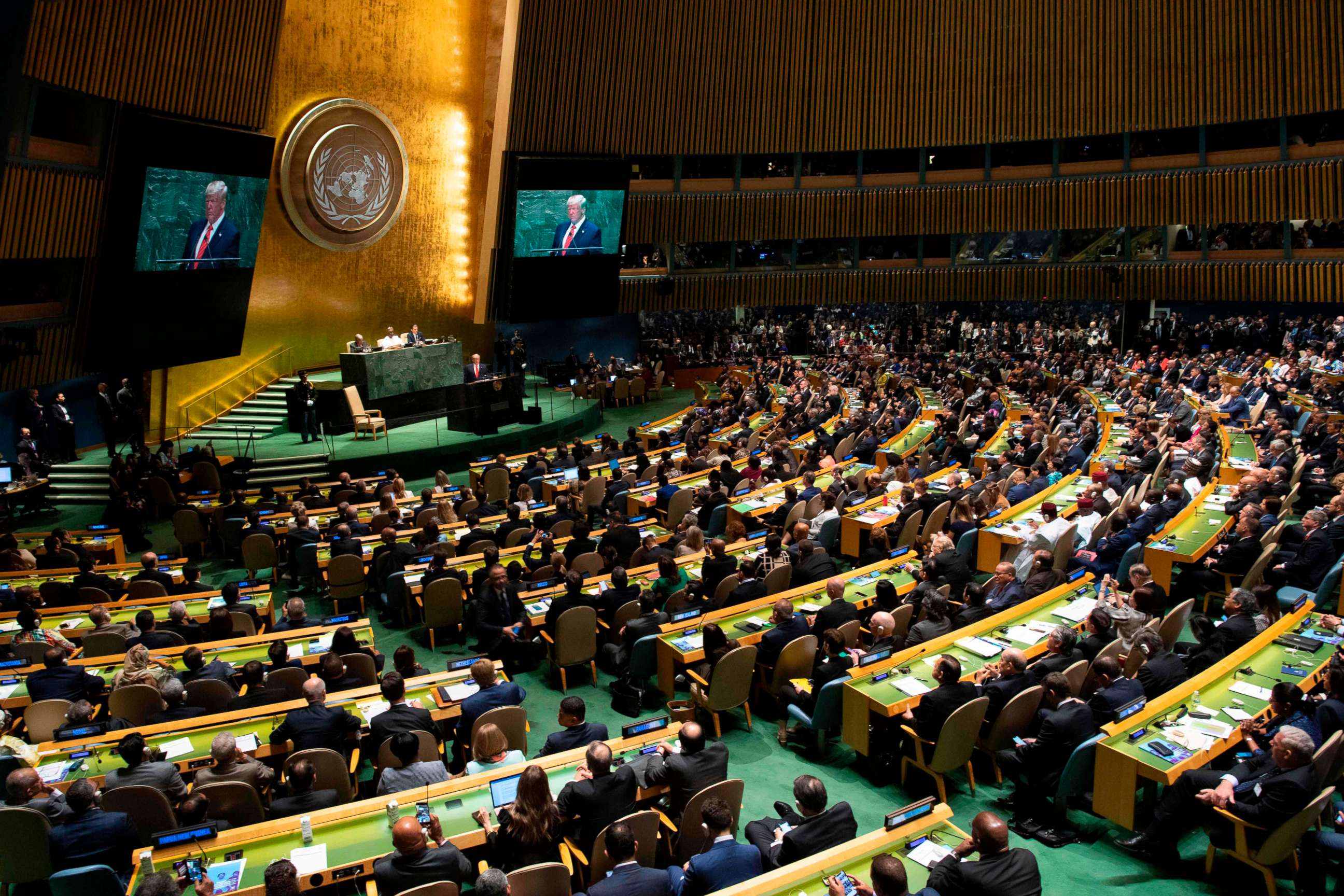The history of keeping the United Nations General Assembly secured: Analysis
The UNGA is arguably the world's largest yearly security event.
When Marine One landed at the Wall Street heliport earlier this week with President Trump who then got into his motorcade for a short trip up the FDR Drive — several layers of security measures brought him safely to New York City to attend this week's United Nations General Assembly.
Most are used to seeing the president move within the confines of his security bubble. However, when he arrives in New York to attend any UNGA, security becomes not only about the U.S. president but about every visitor at the event and the citizens in the surrounding area.
The UNGA is arguably the world's largest yearly security event. There are representatives from 193 UN member states — all have different security risk levels and threats.
One challenge is the often complex international relationships between UN members who may even insult or provoke each other. In 2006, former Venezuelan president Hugo Chavez issued a widely-publicized insult when he took to the podium a day after former president George W. Bush spoke and said "Yesterday, the devil came here … And it smells of sulfur still today."
And this year’s UNGA took place against the tense backdrop of the oil facilities attacks in Saudi Arabia a few weeks ago.
Such diplomatic and security dynamics take on heightened focus when an event occurs in a tight space like Manhattan — just over 22 square miles with approximately 1.6 million people living and working there.
The most pressing security concerns at UGNA are the myriad of threats and ensuring the safety of world leaders as they attend events, go to meetings and conduct business while in town.
The federal government developed a framework for securing large-scale events that began when former president Bill Clinton signed the Presidential Decision Directive 62 (PDD 62): Protection against Unconventional Threats to the Homeland and Americans Overseas.
The directive established a basic framework -- under the direction of the president -- for federal department and agency counterterrorism program coordination.
The directive also placed the Secret Service as the lead agency for planning and implementing operational security for NSSEs. It also made the FBI responsible for organizing counterterrorism activities, and the Federal Emergency Management Agency (FEMA) for managing incident response, and directed the FBI and other federal agencies to focus on coordination of their mission specialties
PDD 62 was codified in 2000 when Congress passed the Presidential Threat Protection Act of 2000 which authorized the Secret Service to manage security operations at National Special Security Events (NSSEs).
Events of national significance like the UNGA are designated as NSSEs. That NSSE designation takes into account many things including: expected attendance by U.S. officials and foreign dignitaries, the size of the event, the significance of the event and any threats and vulnerabilities related to the event.
When the Department of Homeland Security was created in 2002 in response to the 9/11 attacks, President George W. Bush gave the secretary of DHS the authority to designate events as NSSEs. DHS categorizes an event as an NSSE if it is of national or international significance and one that DHS considers a potential target for terrorism or other criminal activity.

By the way, organizers of other large-scale events -- like the Super Bowl -- can ask DHS for a security rating based upon DHS' SEAR (Security Event Assessment Rating) system, to become designated NSSE events.
When an NSSE is planned, every federal, state and local entity participates to ensure their operational areas of expertise are accounted for and addressed. For a significant event in New York City, those entities would include the agencies running the airports, bridges and tunnels, trains, buses and trash services.
As the lead agency, the United States Secret Service must plan, coordinate and ultimately implement security operations for NSSEs.
For the UNGA, the Secret Service forms an executive steering committee, typically chaired by that agency with senior representatives from other federal, state and local entities including the New York City Police and the local office of homeland security and emergency management.
The executive steering committee gives final approval over a list of security and operational plans. Although the UNGA happens annually, that planning process starts from scratch and is re-examined, revamped and updated every year.
The highest levels of government, including the directors of the Secret Service, FBI and Secretary of Homeland Security are briefed on every facet involved in the NSSE security planning.
Once world leaders and UN members are "wheels down" in NYC, there is close coordination of all stakeholders. Part of that coordination is setting up operations and coordination centers throughout the city. These operations and coordination centers tackle everything from hotel lodging and logistics, to intelligence deconfliction, communication, medical response and air traffic. There are also redundant coordination centers and plans in place in the unlikely event of a major or catastrophic incident.
Planning for an NSSE like the UNGA often takes over a year. During that time the nation’s front-line defenders work diligently to ensure that all risks are minimized and plans coordinated. This framework allows the planners to ensure that if something does happen, the response will be swift and strong.
Donald J. Mihalek is an ABC News contributor, retired senior Secret Service agent and regional field training instructor who also serves as the executive vice president of the Federal Law Enforcement Officers Association Foundation.
Richard Frankel is an ABC News contributor and retired FBI special agent who was the special agent in charge of the FBI's Newark Division and prior to that, the FBI's NY Joint Terrorism TASK force. He is currently the Vice President of Investigation for T&M Protection Resources.






